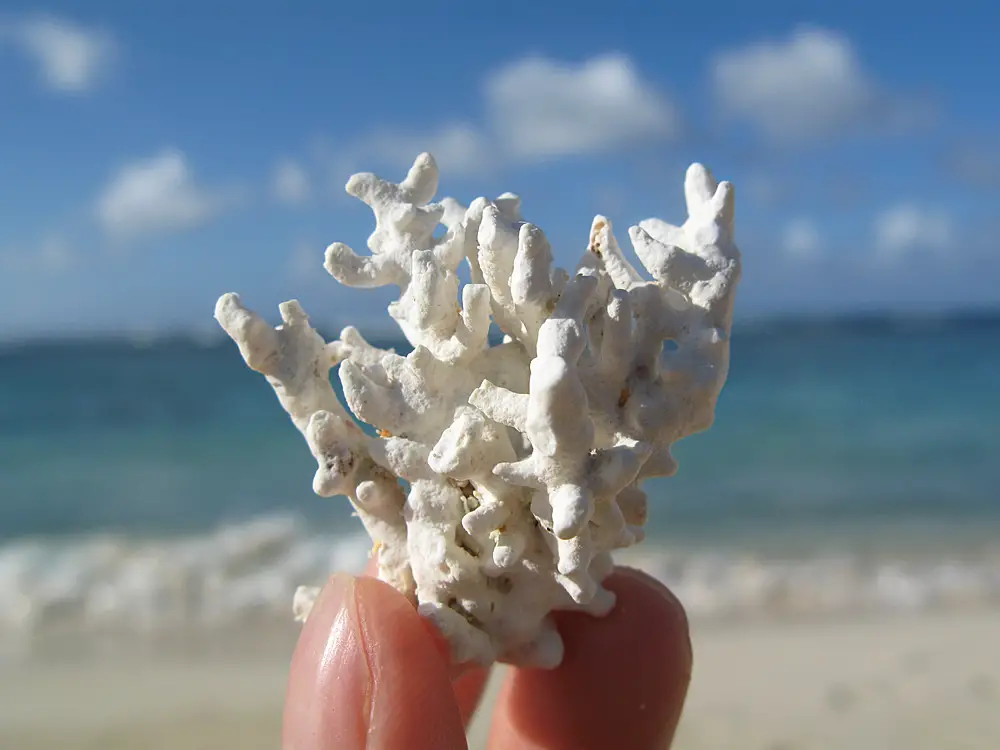Finding coral on the beach is always exciting. Whether you’re visiting the beach on a vacation or live nearby, you’ll more than likely want to display your newfound coral in your home. But how can you safely preserve it?
To dry coral, all you need to do is place it outside in the sun. While you can dry coral in cold and cloudy conditions, it will take much longer to dry out than in the warm sunshine. You can set the coral on a cookie cooling rack to help increase the airflow around the coral and speed up the drying process.
Want to learn more about how to dry and preserve your beautiful new coral? Keep reading to find out.
How long does it take coral to dry?
Coral can take anywhere from a few days to even weeks or months to completely dry out. There are several factors that can affect your coral’s drying time.
If you live in a humid environment, drying your coral will take quite a while. If you live in a dry climate, the moisture in the coral will evaporate much more quickly.
The amount of sun can also influence the length of time it takes for your coral to dry. Sunny, cloudless conditions can help your coral dry in a matter of a few days, while overcast conditions may stretch the drying time to a few weeks.
And finally, the temperature will help determine how long your coral needs to dry out. If you can set your coral outside during the heat of the summer, it will dry the quickest.
If you need to dry your coral in the winter and you live in a place that experiences frigid temperatures, you might consider letting your coral dry indoors so that it doesn’t freeze. To speed up the process, you can place it in a sunny window and run a small fan nearby to maximize the airflow around the coral.
How do you preserve coral at home?
If you want to preserve your coral at home, you first need to know if you’re dealing with hard or soft coral. This is easy to determine—if the coral is flexible at all, it’s soft and needs to be handled very delicately. Hard coral can be handled without it flexing or moving.
You can also tell whether you have hard or soft coral by looking at the number of tentacles that each polyp of the coral has. If there are exactly eight tentacles, it’s a soft coral. However, if the polyps have any other number of tentacles, it’s a hard coral.
Hard Coral
Hard coral is easy to preserve. Follow these easy steps and your new coral will be ready to display on a shelf or in your aquarium.
- Place the coral in a solution of bleach and water. You’ll want to use three parts water to one part bleach for this process. Make sure the coral is covered completely and let it soak overnight or up to three days.
- Once your coral has soaked for at least eight hours, rinse it off with cold water. You want to make sure any bleach is removed before placing it out to dry.
- Place the coral in a spot where it can dry thoroughly. Outdoors is ideal in warm, sunny conditions, but inside your home will work if it’s cold and cloudy outside.
- Give the coral a few days to dry before checking it. If it’s still damp, let it keep drying. Once it’s dried completely, it’s ready to display.
Soft Coral
Preserving soft coral is very similar to preserving dry coral, but there are a few things you should keep in mind before you get started.
- Never use bleach when working with soft coral. It will destroy it.
- Instead of allowing the coral to soak overnight in water, gently rinse it with room temperature water. This will help to clean it without damaging it.
- Be very gentle when handling your soft coral. You can let it dry outside, but keep it out of harsh winds and frigid temperatures.
How do you polish raw coral?
Most types of coral are too delicate to be polished. However, if you are working with a piece of black coral, it may be very gently polished.
Use a piece of sandpaper and polish the coral by hand. Using extreme caution, rub the sandpaper in circles over the coral. Only apply very light pressure to avoid breaking the coral. Once the spot you’re working on becomes smooth, begin working on another one and repeat the process until the whole coral is smooth.
How do you make a dead coral white?
Dead corals typically turn white on their own. In fact, coral bleaching is a major problem in ocean waters that have experienced higher than normal water temperatures. As the water gets warmer, the brightly-colored organisms that live in corals become stressed. This stress causes them to turn white and they will eventually die.
However, if you’ve found a coral on the beach and it’s not white, you don’t have to worry about the fate of the coral. After a coral leaves the ocean, it is unable to survive and will die whether you take it home or not.
You can make a coral turn white simply by letting it dry out. However, this process can sometimes take several weeks. To speed it up, you can soak the coral in a three parts water, one part bleach solution at least overnight.
Final thoughts
Coral is a beautiful decoration in your home or in your aquarium. It’s even more special if you display coral that you found on the beach.
By soaking your coral and allowing it to dry thoroughly, it’ll be ready to be your new centerpiece or hiding spot for your aquarium fish. Just to be sure to thoroughly rinse off any bleach you add to the coral so it’s safe to place anywhere in your home.



